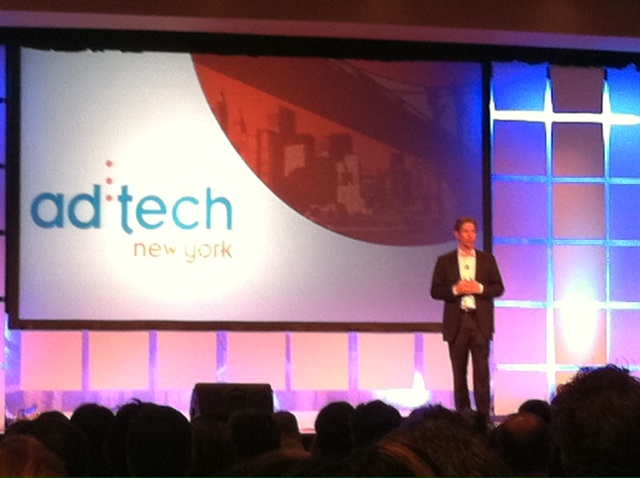Facebook’s vice president of advertising, David Fischer, has some advice for marketers trying to integrate social media marketing into their digital campaigns: “Your people strategy is your strategy.” Fischer shared insights with ad:tech New York attendees on how putting consumer experience first is key to driving sales from social media (and other channels across the web).
When it comes to engaging online audiences, Fischer spoke to the need to make content and conversations relevant to prospects. Consumers are 68 percent more likely to remember an ad with social context, two times more likely to remember the message and four times more likely to make purchases with the sponsoring brand.
To this end, he emphasized the value of Sponsored Stories as an advertising tool because they generate awareness of organic brand sharing – and that’s something consumers respond to. Fischer explained that reaching friends of fans is essential to social marketing as it offers 81 times the reach. Of course, to fuel Stories and other contextual ads, marketers need to provide social fans with content worth sharing.
Fischer gave ad:tech attendees three steps to social marketing success:
1. Connect.
From site pages to email marketing newsletters, it’s important to build social into every element of online (and offline) marketing. Brafton has reported that about half of the web’s top sites miss opportunities to connect with visitors because they don’t add sharing buttons to their blog posts or news content. Fisher advised marketers not only to add social to every campaign they run, but make it a core element. Instead of simply adding share buttons on a completed email newsletter, think of ways to encourage social shares, speak directly to users and promote social pages as the content of the email is planned.
2. Engage.
“With Facebook, people can feel like they’re part of your brand,” said Fisher. Once marketers catch customers and potential customers’ interest with their social campaigns, it’s time to invite them to participate. User-generated content is essential to maximizing a business’ reach and to involving them in the branding process. Brafton has reported that winning this level of investment can pay off as consumers recommend brands they interact with (for example, 60 percent of Twitter users advocate for brands they follow).
Brafton has covered some proven best practices for engagement – including posing and answering Twitter questions, encouraging comments on blog posts and sharing visual content on Facebook for marketers looking for more insights on this.
3. Inspire.
Marketers that build sustainable connections with consumers will provide inspiring experiences. Fischer suggested that creating a unique and “inspiring” customer experience through consistent and relevant outreach will win sales.
He cited examples from a number of brands that succeed in turning Likes into leads and revenue, including Mean Stinks, which offers a social forum on its Facebook Page and combined original content with Sponsored Stories to garner 32,000 positive messages and a 9 percent increase in sales. He also pointed to Huggies in Japan, which integrated Facebook content into its overall campaign to boost its market share by 4.2 percent.
By catering to their prospects’ needs and using social as a lens for their overall marketing, small and large companies “transform products into brands,” Fischer said.
Fischer affirmed that personalization is the future of the web. He believes that social context will be key to standing out in an increasingly cluttered online space, and this is a message that echoes what Google and Bing experts said at SMX New York.
Bing’s Stefan Weitz and Google’s Jack Menzel indicated that search engines are increasingly relying on users’ personal filters and their friends’ social sharing behaviors to return results to users. As Brafton reported, SMX keynote speaker Eli Parisier discussed that personal filters necessitate relevant content across the web and bring new opportunities and challenges to SEO marketing efforts. Fischer’s tips for making (successful) social outreach a more integral part of every form of marketing will likely help marketers’ stand out and compel clicks from their prospects.




